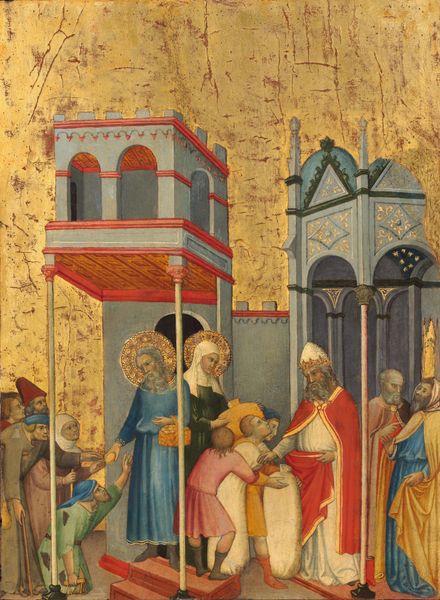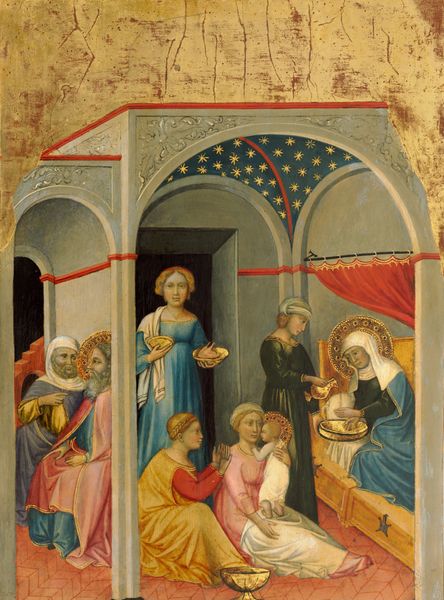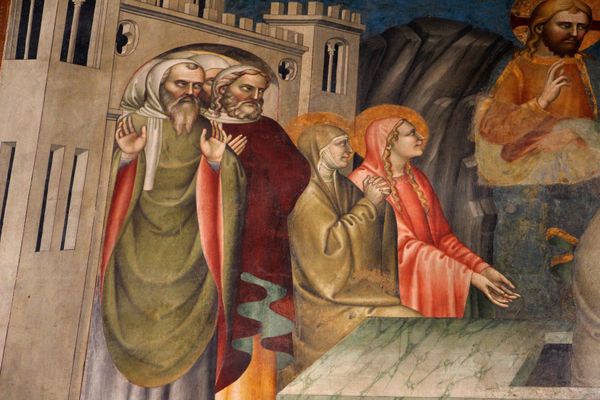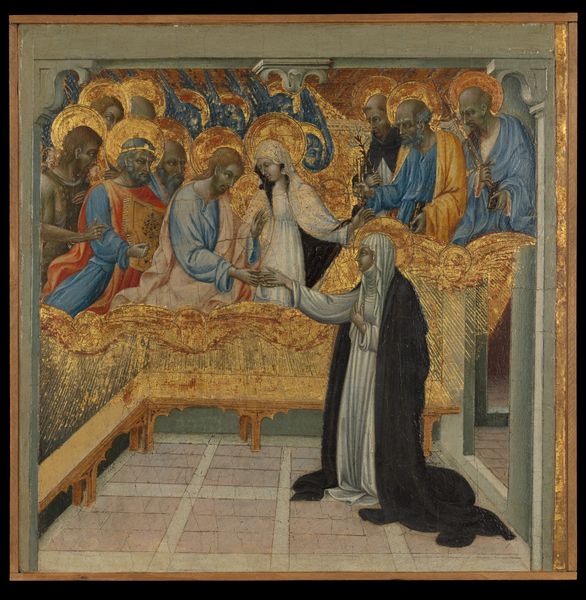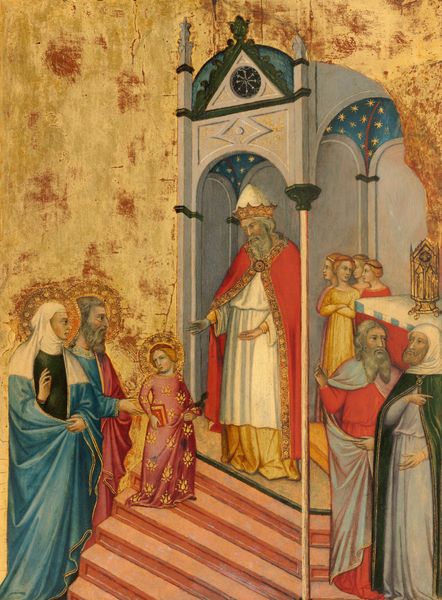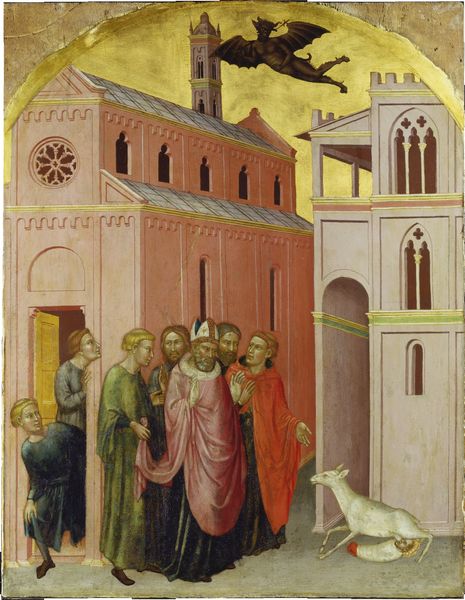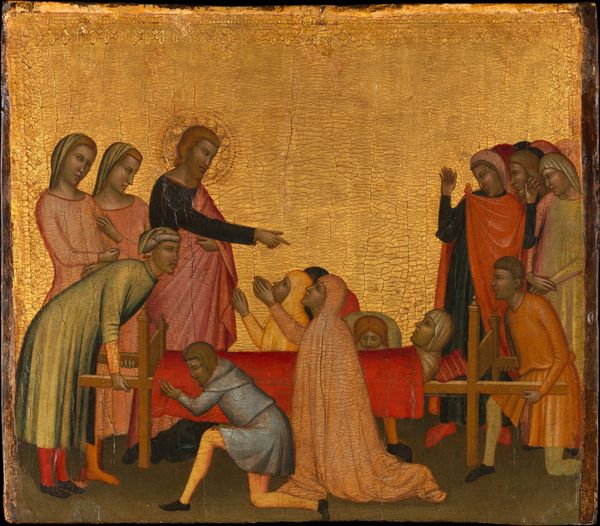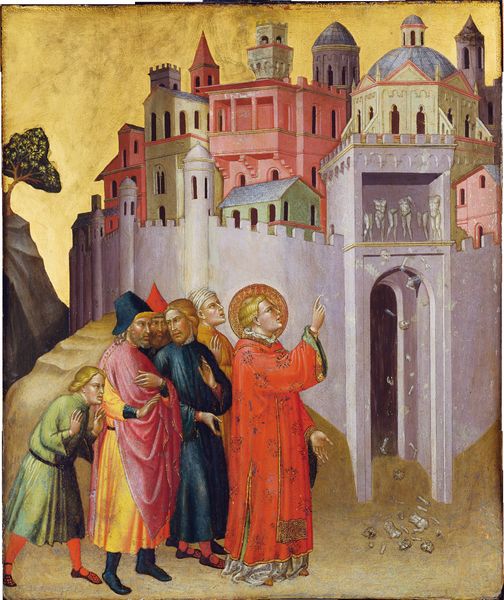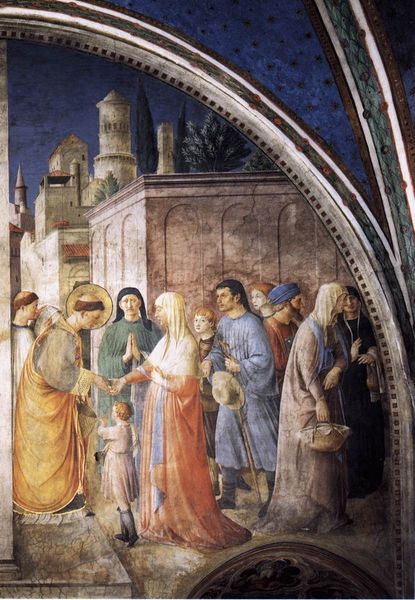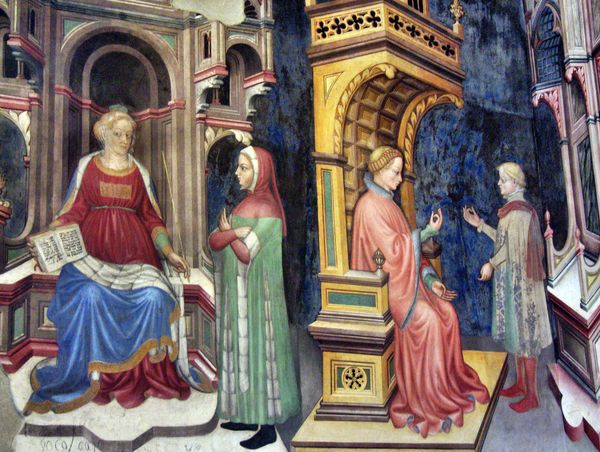
The Birth, Naming, and Circumcision of Saint John the Baptist c. 1335
0:00
0:00
tempera, painting
#
narrative-art
#
tempera
#
painting
#
figuration
#
oil painting
#
history-painting
#
italian-renaissance
#
early-renaissance
#
miniature
Dimensions: painted surface: 46.4 × 38.3 cm (18 1/4 × 15 1/16 in.) overall: 48.8 × 40.7 cm (19 3/16 × 16 in.) framed: 55.7 x 48.1 x 5.1 cm (21 15/16 x 18 15/16 x 2 in.)
Copyright: National Gallery of Art: CC0 1.0
Curator: This is "The Birth, Naming, and Circumcision of Saint John the Baptist," a tempera on panel painting created around 1335 by Giovanni Baronzio. What’s your first take? Editor: It feels… contained. There’s this flattened perspective and the use of space seems symbolic rather than natural. All these ritualistic acts are taking place almost simultaneously. It seems the goal wasn't to capture real time, but to tell the story of St. John in one fell swoop. Curator: Indeed. Baronzio was likely commissioned for a devotional work, where clarity of narrative and visual impact were paramount. The gold leaf background, common in panel painting from this era, served a very practical function, creating luminosity through the meticulous application of the precious material. Consider the labor that went into applying each tiny piece! Editor: Speaking of labor, look at how gender is depicted. You have the male figures actively involved in religious rituals, while the women are relegated to tending to the newborn, reinforcing prescribed gender roles within a religious framework. And the circumcision ritual, notably—who benefits from that system? Curator: Absolutely. It's a powerful example of how these scenes embedded complex social dynamics, reinforcing hierarchies through composition, attire, and action. You can trace the availability of imported pigments, such as ultramarine, as a marker of patronage in art from this time. Someone financed this work and determined what types of colors would adorn it. Editor: Right, and how about unpacking the historical context surrounding circumcision? It symbolizes the covenant between God and Abraham, signifying inclusion into a community rooted in male lineage. The whole practice intersects with debates about bodily autonomy, religious obligation, and patriarchy. Curator: Yes, it also emphasizes John’s prophetic destiny from birth. Notice Baronzio's detailed work on the textiles, and how he contrasts their tactile reality against the golden realm that surrounds the architecture of the city where the events play out. Editor: A great detail. All in all, I’m struck by the multiple narratives embedded within this panel. Curator: Indeed; there is a striking confluence of influences here. Reflecting on it all, from labor practices to religious obligations and trade routes… it adds layers of meaning to how we engage with such a panel today.
Comments
No comments
Be the first to comment and join the conversation on the ultimate creative platform.
